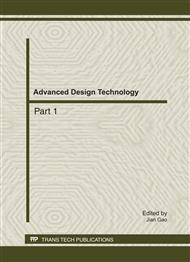[1]
Yu-Ru Xu , Kun Xiao . Technology Development of Autonomous Ocean Vehicle. Acta Automatica Sinica. 33(5): 2007: 518~521.(In Chinese)
Google Scholar
[2]
Edin Omerdic, Geoff Roberts. Thruster Fault Diagnosis and Accommodation for Open-frame Underwater vehicles. Control Engineering Practice 12, 2004: 1575~1598
DOI: 10.1016/j.conengprac.2003.12.014
Google Scholar
[3]
B. Buckham, F.R. Driscoll and M. Nahon, "Development of a Finite Element Cable Model for Use in Low-Tension Dynamics Simulation," Journal of Applied Mechanics, 71, 2004 : 476-485,.
DOI: 10.1115/1.1755691
Google Scholar
[4]
F.R. Driscoll, R.G. Lueck, M. Nahon. Development and Validation of a Lumped-mass Dynamics Model of a Deep-sea ROV System. Applied Ocean Research, (22), 2000: 169–182
DOI: 10.1016/s0141-1187(00)00002-x
Google Scholar
[5]
J.Yuh, JingNie. Application of Non-repressor Based Adaptive Control to Underwater Robots. Computer and Electrical Engineering. 26, 2000: 169~179.
DOI: 10.1016/s0045-7906(99)00039-7
Google Scholar
[6]
T.W. Kim, J. Yuh. Development of a Real-time Control Architecture for a Semi-autonomous Underwater Vehicle for Intervention Missions. Control Engineering Practice, (12), 2004: 1521~1530
DOI: 10.1016/j.conengprac.2003.12.015
Google Scholar
[7]
Xue-min Liu. Research on Information Syncretization of Motion Control System for Underwater Vehicle. A Dissertation for the degree of D.Eng. Harbin Engineering University. 2001. (In Chinese)
Google Scholar
[8]
Yong Gan. Research on Motion Control System Architecture of Underwater Vehicle. A Dissertation for the degree of D.Eng. Harbin Engineering University. 2007. (In Chinese)
Google Scholar
[9]
Fossen, T. I., & Blanke, M.. Nonlinear Output Feedback Control of Underwater Vehicle Propellers Using Feedback Form Estimated Axial flow velocity. IEEE Journal of Oceaning Engineering, 25(2), 2000: 241~255.
DOI: 10.1109/48.838987
Google Scholar
[10]
Serdar Soylu, Bradley J. Buckham, Ron P. Podhorodeski. A Chattering-free Sliding-mode Controller for Underwater Vehicles with Fault Tolerant Infinity-norm Thrust Allocation. Ocean Engineering 35, 2008 1647~1659.
DOI: 10.1016/j.oceaneng.2008.07.013
Google Scholar
[11]
G. Bartolini, A. Ferrara, and E. Usai, "Output Tracking Control of Uncertain Nonlinear Second-order Systems," Automatica, 33(12), 1997: 2203~2212.
DOI: 10.1016/s0005-1098(97)00147-7
Google Scholar
[12]
G. Bartolini, A. Ferrara, and E. Usai, "Output Tracking Control of Uncertain Nonlinear Second-order Systems," Automatica, vol. 33, no. 12, Dec. 1997: 2203~2212.
DOI: 10.1016/s0005-1098(97)00147-7
Google Scholar
[13]
Soylu, S., Buckham, B., Podhorodeski, R., Robust Control of Underwater Vehicles with Fault-tolerant Infinity-norm Thruster Force Allocation. In Proceedings of the OCEANS 2007 MTS/IEEE Conference and Exhibition,Vancouver, BC, Canada. 2007.
DOI: 10.1109/oceans.2007.4449388
Google Scholar
[14]
Antoniou, A., Lu, W.S., Practical Optimization: Algorithms and Engineering Applications. Springer, Berlin. 2007.
Google Scholar


